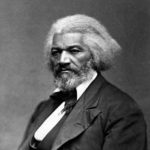Most Americans are unaware about when and where Fourth Amendment rights are at issue. This lesson will allow students to examine the text and interpretations of the Fourth Amendment to describe key terms and ideas like searches, seizures, and privacy, as well as define some of the key debates about where the Fourth Amendment is headed in an age of technology.
Search Me
The lesson begins with students lined up in the front of the room. They are presented with a series of searches/seizures. If they believe the search/seizure was lawful, they step forward; if they believe it to be unlawful, they step backward. Next, students break into four groups. Each group is responsible for focusing on searches/seizures in a specific setting: at school, at home, in cars, or in public. The groups reconvene and present their ideas and findings to the rest of the class.
Search and Seizure Cartoon Analysis
Spark a conversation about the balance between national security and Fourth Amendment rights with this quick cartoon of Lady Liberty.
Making Our Fourth Amendment Right Real
This lesson plan is based on the Annenberg Classroom video “Search and Seizure: Mapp v. Ohio,” which explores the landmark search-and-seizure case that makes state governments also responsible for protecting our Fourth Amendment right. With the exclusionary rule, this right becomes real for all of us.
“What to the Slave Is the Fourth of July?”
Frederick Douglass earned wide renown as an outspoken and eloquent critic of the institution of slavery. In this speech before a sizeable audience of New York abolitionists, Douglass reminds them that the Fourth of July, though a day of celebration for white Americans, was still a day of mourning for slaves and former slaves like himself, because they were reminded of the unfulfilled promise of equal liberty for all in the Declaration of Independence.
Interactive Constitution: Fourth Amendment (High School)
This lesson introduces students to different viewpoints and debates surrounding the 4th Amendment by using the National Constitution Center’s Interactive Constitution. Students will build understanding of the resources and methods used by justices on the Supreme Court and Constitutional scholars when analyzing and forming opinions about articles, sections, and clauses of the Constitution.
Interactive Constitution: Fourth Amendment (Middle Level)
This lesson introduces students to different viewpoints and debates surrounding the 4th Amendment by using the National Constitution Center’s Interactive Constitution. Students will build understanding of the resources and methods used by justices on the Supreme Court and Constitutional scholars when analyzing and forming opinions about articles, sections, and clauses of the Constitution.
What to the Slave is the Fourth of July?

Students are guided through a careful reading of Frederick Douglass’ greatest speech in which he both praises the founders and their principles, yet condemns the continued existence of slavery. The Constitution is presented as a “glorious liberty document” which, if properly interpreted, is completely anti-slavery. Douglass delivered this speech on July 5, 1852 at the height of the controversy over the Fugitive Slave law. The speech is generally considered his greatest and one of the greatest speeches of the 19th century. Before you read the speech you can follow links to learn more about Douglass’s life and the evolution of his thought in this period.
Bond v. United States (2000)
Does an agent’s manipulation of a passenger’s luggage without consent or probable cause violate the Fourth Amendment? This case summary shows how the Supreme Court answered that question in 2000.
Brendlin v. California (2007)
When a vehicle is subject to a traffic stop, is a passenger in the vehicle “seized” for purposes of the Fourth Amendment? This case summary shows how the Supreme Court answered that question in 2007.